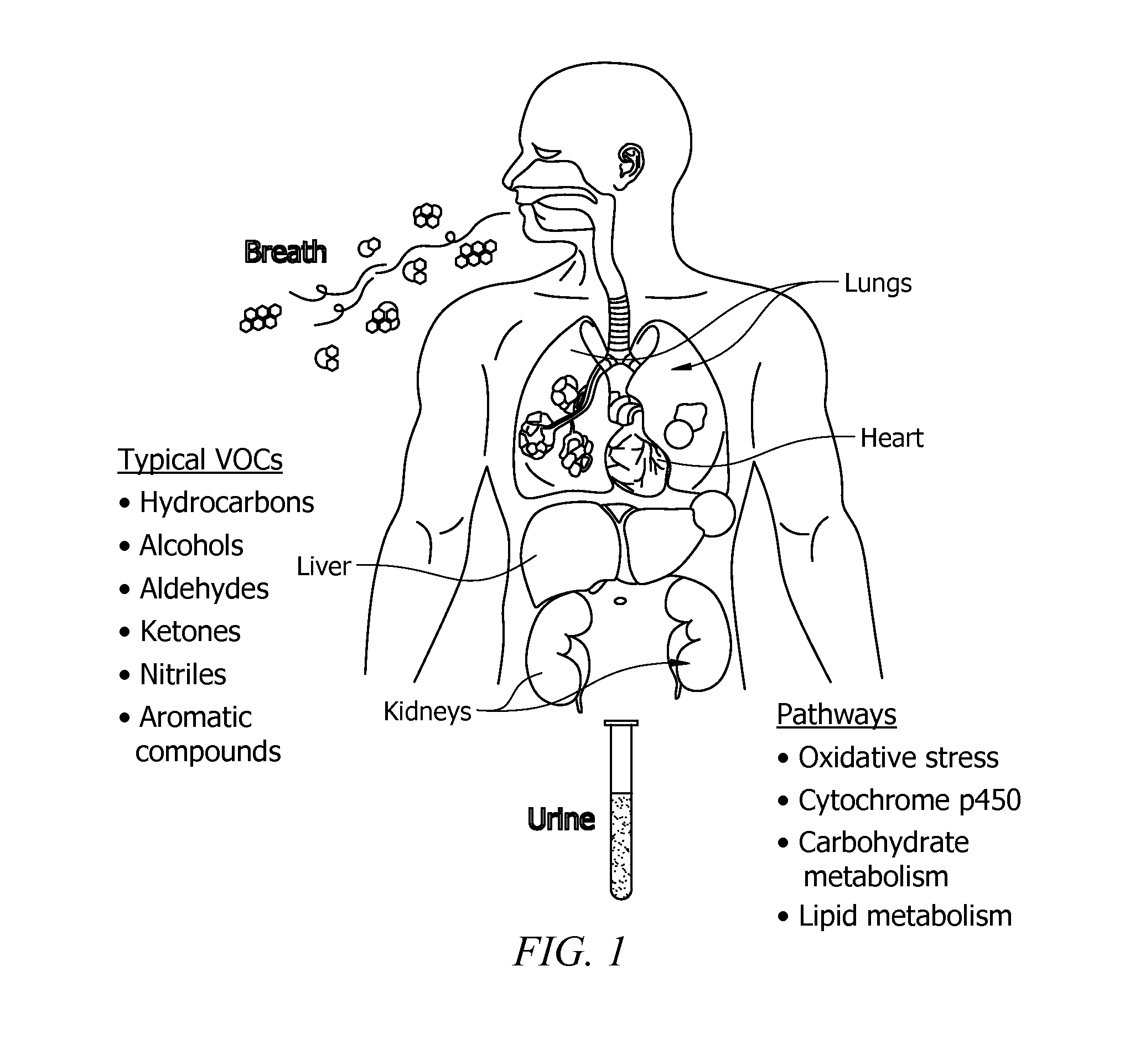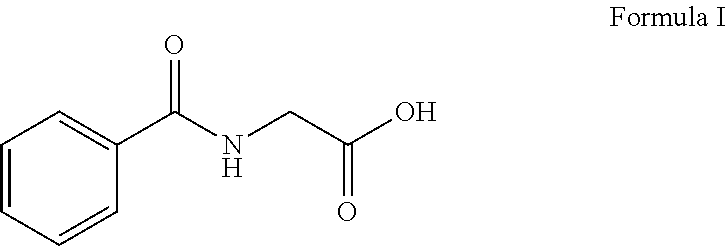Volatile Organic Gases as Bioindicators for Transplant Rejection
- Summary
- Abstract
- Description
- Claims
- Application Information
AI Technical Summary
Benefits of technology
Problems solved by technology
Method used
Image
Examples
examples
[0050]The present disclosure relates to non-invasive early diagnosis of the heart rejection.
[0051]A methodology of the type disclosed herein comprises at least two components: (1) the utilization of urine samples to recover VOCs that are produced through rejection-related abnormal metabolic pathways; and (2) a nanosensor based, highly sensitive, redundant and steadily structured electronic nose system.
[0052]VOC biomarkers of rejection animal model to optimize the sample preparation to efficiently extract VOC chemicals: Identify urinal VOCs produced by post-transplanted animals with GC-MS; To statistically screen the candidate markers and conduct internal and external validations; To conduct quality control and identify the VOC markers; To sort out longitudinal shift of the VOC signatures vs. the progress of rejection, in order to identify the markers at early stage rejection.
[0053]VOC signature pattern with the eN system to demonstrate proof-of concept of the early rejection diagnos...
PUM
 Login to View More
Login to View More Abstract
Description
Claims
Application Information
 Login to View More
Login to View More - R&D
- Intellectual Property
- Life Sciences
- Materials
- Tech Scout
- Unparalleled Data Quality
- Higher Quality Content
- 60% Fewer Hallucinations
Browse by: Latest US Patents, China's latest patents, Technical Efficacy Thesaurus, Application Domain, Technology Topic, Popular Technical Reports.
© 2025 PatSnap. All rights reserved.Legal|Privacy policy|Modern Slavery Act Transparency Statement|Sitemap|About US| Contact US: help@patsnap.com



